
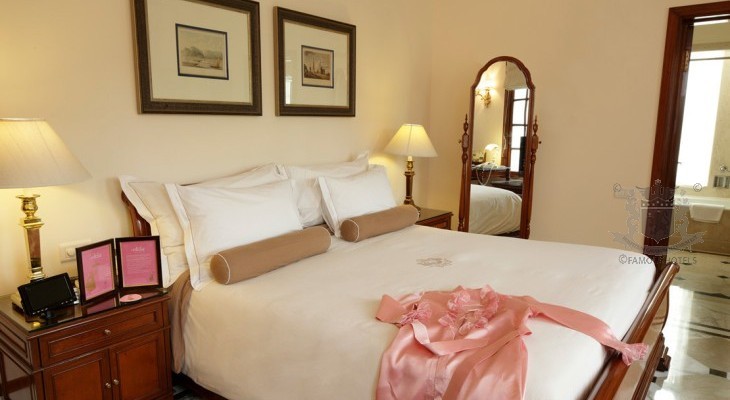
An elegant ball at the Imperial in the 1960s - and a new Eliza Room
Imperial New Delhi
"The privileged among us experience a special feeling of ‘coming home’ when checking into a hotel, just as lovers of fine art are struck with profound admiration when confronted with a particularly beautiful piece on a gallery wall. These are two equally pleasing emotions. Ever thought about checking into a museum? If so, follow me to The Imperial in New Delhi."
Andreas Augustin
ELIZA
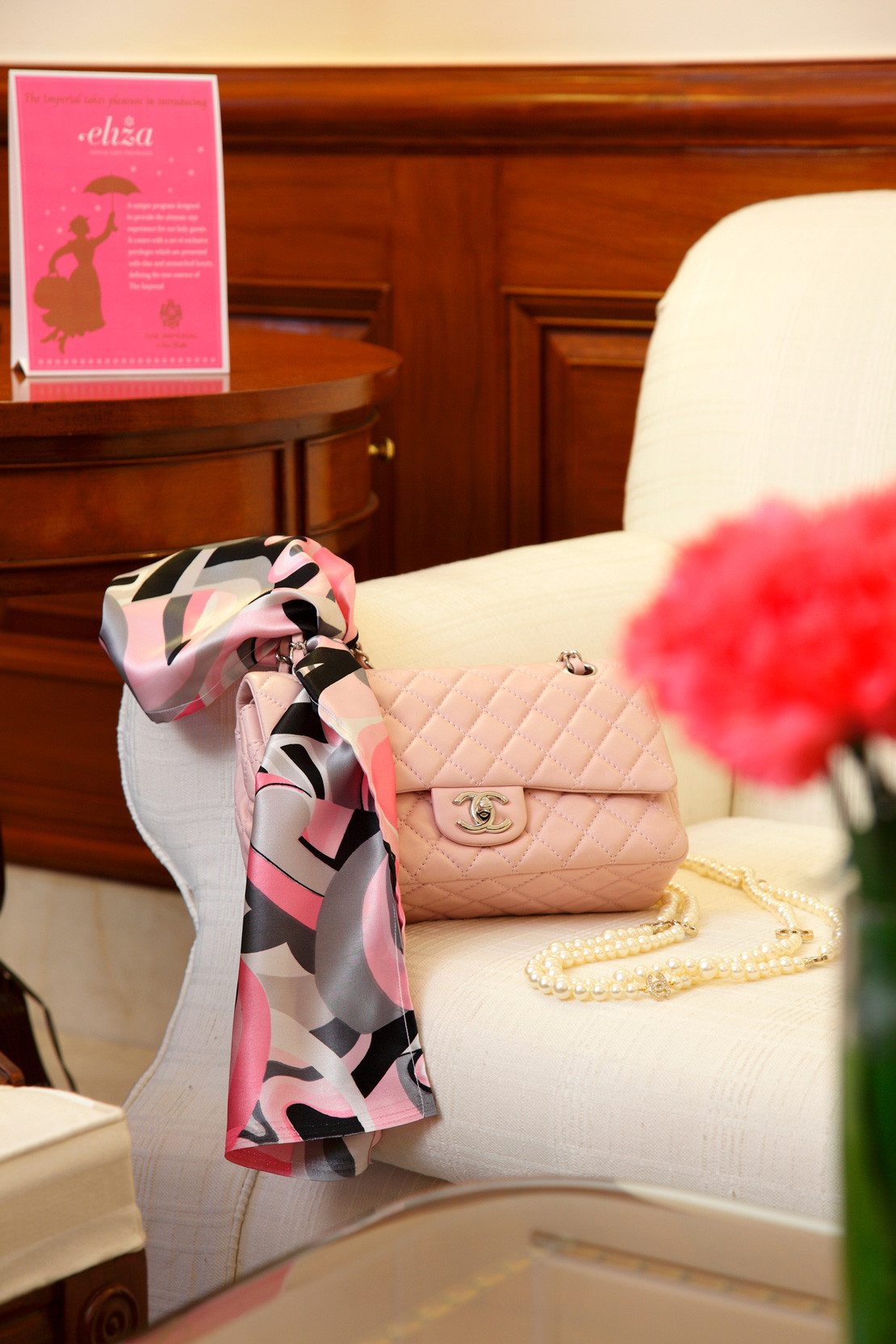
Pygmalion, a play by George Bernard Shaw, introduced to us Eliza Doolittle, Walt Disney brought us Mary Poppins — a charming mix of these two figures can be found at the Imperial in New Delhi.
The reason is less charming: the growing demand of female travellers for SECURE AND SECLUDED accommodation led to the installation of a suite of rooms named ELIZA. Their symbol is the silhouette of Mary Poppins. The Imperial has a special program “ELIZA”, a “Single Lady Corridor”for single lady travellers equipped with CCTV cameras. Providing special In-room check-in facilities - of course.
The Single Lady Corridor consists of 12 Eliza rooms. Each room has a separate room door camera installed as an additional security feature. To make their stay with The Imperial exemplary, the rooms are provided with Manicure set, Women’s magazine and special flower arrangements.
Only lady staff assistance is appointed for round the clock room service and all telephone calls go through a screening process before being connected to the room. Special Linen provides the seamless elegant touch to a perfect stay experience. Beginning from room amenities to bathroom accessories, the rooms have everything one can imagine and provides an unmatched opulence and memorable stay.
The program essentially caters to a 360 degree understanding of a single lady’s requirements and needs at The Imperial, providing them a home away from home.
The creation of a full fledged Single Lady Corridor at The Imperial has been fostered by the growing demand. The more interesting aspect of the Eliza rooms is the ‘feminine touch’. The upholstery is soft in shades of pink with specially designed bath-robes and other pleasurable amenities making it an indulgent experience for the guests. Eliza program also offers a special airport pick up facility wherein a lady associate escorts the guest.

The little monitor on the beside table shows who's at the door!
And the Price Tag?
All these privileges are attached with no extra cost. It is same in comparison to a similar category room at The Imperial. The difference lies in providing an array of tempting personalised services. It’s the bouquet of small touches that go a long way.


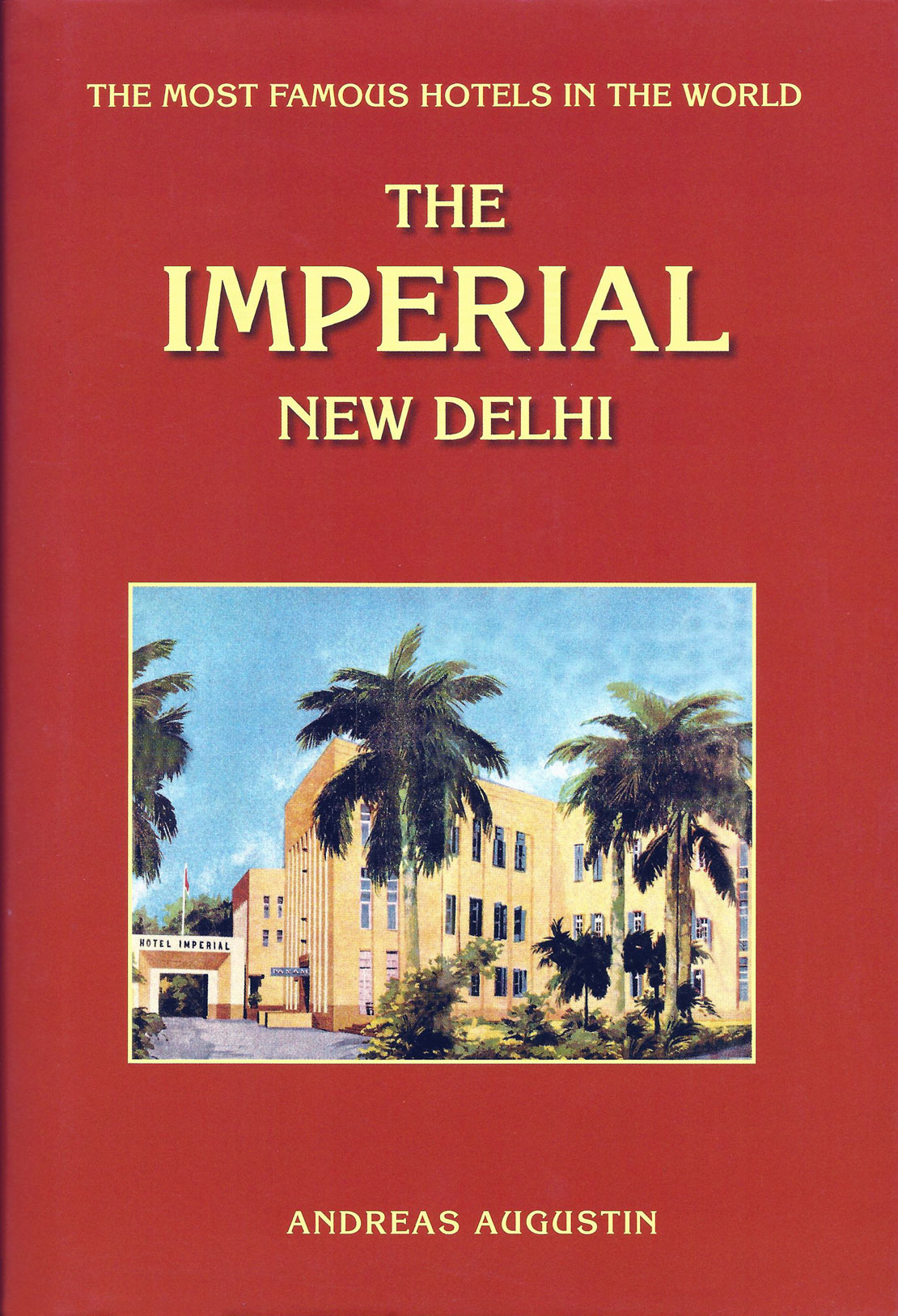
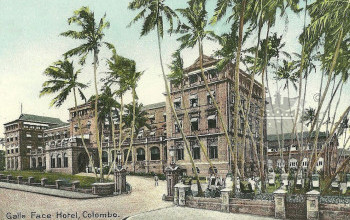
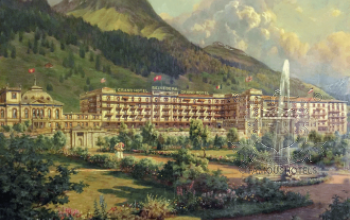

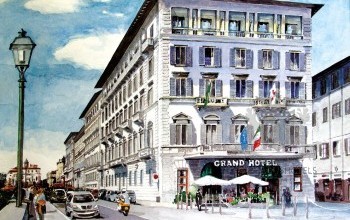
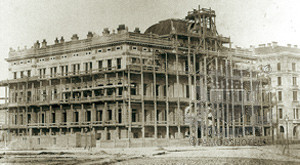
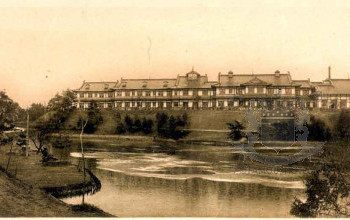

How the Stage was Set
HISTORY
1911: the capital was officially moved from Calcutta to New Delhi.
1913: India sent a strong intellectual signal into the world. Indian Rabindranath Tagore became the first non-Westerner to win the Nobel Prize for Literature According to Thomas Cook’s handbook for travellers Cecil, Laurie’s and Maiden’s Metropolitan Hotel were the first hotels in old Delhi. Until the 1930s New Delhi had no hotel of international standards.
1934: First plan of New Delhi shows a ‘Hotel’ at Queens Way around 1934. This was to become The Imperial. That year, Rai Bahadur, the builder and owner of the land and Blomfield developed a remarkably modern building, finally leaving traditional Indian influences in the past: The Imperial. The sober Art Deco structure was a striking feature of the building, which was set to become the country’s most modern hotel and the revolving point of modern India. Lady Willindon, the wife of the Viceroy, lent her advice as how to furnish the hotel.
1935: The firm of C.G. and F.B. Blomfield - a modern team of architects - had built the ‘Modern School’ in Daryaganj, New Delhi, which opened in 1920.
1936: The Imperial opened its doors with a gala affair that spread over a few days. The British aristocracy gathered, India’s leaders arrived and the Maharajas from the northern states stayed at the hotel, enjoying their wonderful viceregal suites with 20 foot bathroom ceilings.
1947 Monday, 9 June: Jinnah’s All Muslim League Council met at The Imperial. Some 425 delegates had gathered in the ornate Grand Ballroom. Suddenly some 50 Khaksars, ‘Servants of the dust’, a militant Moslem group, storming in from Queens Way were crossing the lawn. From the veranda, they rushed into the restaurant, brandishing belchas, sharpened spades. They started to devastate the furniture of ‘Shahnaz’ restaurant: ‘Get Jinnah!’ they shouted, sprinting to the nearest staircase. By now the vigilant police in front of the hotel had called for reinforcements and the guards in front of the ballroom on the first floor were on full alert. The ‘Servants of the dust’ were reaching the landing in front of the ballroom. The doors had been blocked from the inside, while on the stairs the guards of the National League awaited the intruders. A heavy fight ensued, driving the rebels back downstairs. At the bottom of the staircase the police awaited them with tear gas and arrested them. The delegates inside the grand ballroom were clearly shocked by the interruption. Jinnah was hailed as Shahenshah-e-Pakistan, (literally ‘Emperor of Pakistan’) in the Persian style of Iran’s monarch, but Jinnah urged his supporters not to repeat it, insisting: ‘I am a soldier of Pakistan, not its Emperor.’
1948, 31 January: A man called Nathuram Godse pulled a 38 calibre Beretta and shot dead Mahatma Gandhi. Prime Minister Jawaharlal Nehru sombrely announced the death of Gandhiji, the Mahatma: ‘The light has gone out of our lives and there is darkness everywhere’.
2002: India almost went to war with Pakistan. The New York Times published headlines like ‘12 Million Could Die at Once in an India-Pakistan Nuclear War’.* The threat led to the evacuation of Delhi. Following intelligence advice, all foreign missions left and the hotel’s occupancy rate dropped to five percent. India had less than two million visitors at that time. In comparison London’s Madame Tussauds had four million. Luckily, Pakistan and India found a way to resolve the crisis.
That same year, Frenchman Pierre Jochem became the first foreigner at the helm of The Imperial since the 1950s. He had been general manager at New York’s hotel The Pierre (in addition to other leading Asian hotels). The hotel had 285 rooms and 4,000 pieces of art were on display there. Fashion icon Raghavendra Rathore was contracted to create uniforms for 60 different positions. A blissful new style of music echoed through the hotel. The Imperial became the first hotel in India to hire music designer Marc Barrott to create special moods in different sections of the hotel. In the kitchen Bruno Cerdan, followed by Paolo Petris in 2005, motivated his Indian colleagues. A French pâtissier created delightful little ‘sins’, English afternoon tea was served. A new lunch and dinner concept was introduced in all restaurants and the ‘unpronounceable’ Italian place ‘San Gimignano’ became the favourite haunt of the city’s swish set.
2005: A high-speed Internet connection was installed in every room, soon to be topped by WIFI radio equipment on all floors.
2006: Against growing competition The Imperial remains the number one in India, receives numerous global travel and tourism awards and it becomes increasingly difficult to book a room at the hotel. Plans are underway to expand the hotel's capacity by adding rooms in an adjacent block. A Spa and a new pool were installed.
2010: the Spa opened — one of the most beautiful and elegant spa palaces of India.
2011: the business centre opened as a stand-alone office centre. Its facilities are among the best in the world, multinational companies have immediately settled there. It is managed by Charles Korth. The experience becomes extraordinary and grand with the twenty-seater meeting room, infused with uptown luxury and video conferencing facility to four locations through wireless microphones. This lavish meeting room comes with a fabulous pool view providing a stunning option for post meeting cocktails. It has 35 ft. natural lighting glass wall and a 10.5 ft. by 6.5 ft. video display screen with built in electronics.
From our book The Imperial New Delhi by Andreas Augustin
The Index of the book Hotel Imperial New Delhi reads like a Who's Who: (numbers refer to the pages of the book, available under "BOOKS") A Adam Hopkins 139 Aga Khan 78,112 Akhtar, Farhan Ambani family 153 Ambedkar, Dr. B. 83 Anand, Dev 115 Arora Veena 139,144 Aykroyd, Dan 154 Shabana Azmi with husband Javed Akthar. B Bachchan, Abishek 159 Bachchan, Amitabh 159 Baker 31,32 Balkenende, Peter, Netherlands 156 Barrott, Marc 149 Bedi, Kabir 150,159 Benetton, Luciano 159 Bery, D.R.; Rotary Club 114 Bhaduri, Jaya 116 Bhattacharyya, Sourish 135 Bittmann, Mark 156 Boutros Boutros Ghali 153 Branson, Sir Richard 149 Brassey, Thomas 43 Brodie, John 28 Brown, Peter 118 Brunskill, Chris 151 Buckingham Palace 32 Bulganin, Nikolai 99 C Campbell-Johnson, Allan 85 Campi, Carlo Azeglio (President of Italy) 153 Carllson, Torbjorn 118 Cecinelli, Luigi Cerdan, Bruno 144,149 Chadha, Gurinder 159 Chandni Chowk 32,33 Chandu Chhada 132f,135 Christi, Carlo 118 Clinton, Bill 155 Clinton, Chelsea 137 Connery, Sean 156 Cornell, Chris and April 118f Costa, Edoardo Coward, Noël 80 D Dada Saheb Phalke 33 Dahlburg, John-Thor 131 Dasgupta, Reshmi 143 Dark, Mireille Dash, Ruby 135 de Vito, Danny 158 di Montezemolo, Luca 153 Dravid, Rahul (Cricket) Durbar 11,18ff,29,34,46 G Gandhi, Mahatma 36f,44f,50,61,71,76,79,84,94f, Gandhi, Indira 104,112,127 Gandhi, Rajiv 104,112,127 Gandhi, Sonia 112,154 Garewal, Simi 159 Ghosh, Ruchira 135 Gocher, Jill 15,156 Gorbachev, Mikhail 127 Grant, Ulysses 97 Grover, Preston 83ff H Hall, Jerry 154 Hall, William 81 Hawn, Goldie Hedges, Rosemary 118 Hopkins, Adam 133,139 HRH Beatrix 131, 149 HRH Camilla, Duchess of Cornwall 156 HRH Carl XVI Gustaf (Sweden) 154 HRH Edward VII 18, 20,22 HRH Edward VIII 57 HRH George V 11,18,20,22f,30f HRH George VI 57 HRH El Hassan Bin Talal of Jordan HRH Maha Chakri Sirindhorn of Thailand HRH Mary 11,23,45 HRH Mohammed VI 157 HRH Frederik (Denmark) 157 HRH Saud Al-Faisal, (Saudi Arabia) HRH Shri Gyanendra Bir 157 HRH Abdulaziz Alsaud 153 HRH Michael of Kent 157 HRH Wangchuck, (Bhutan) 156 HRH Zahri Shah I Iyer, Pico 151 J Jacob, Satish 151 Jekyll, Gertrude 30 Jinnah, M. Ali 70f,78,83ff,93f,98,133 Jolie, Angelina 154 Joshi, BK 133 Joshi, Ishan 117 K Kapoor, Rajat 159 Kapoor, Rishi 145 Kaur, Nirlep 104,129 Kerry, John F. 156 Khan, Aamir Khan, Feroz 115 Khan, Sir Zafrullah 67 Khrushchev, Nikita 99 Khudadad, Subadar 81 Kipling, Rudyard 57,59 Klein, Calvin 159 Klessheim 14,105 Kohli, Shashi 130 Koirala Girija Prasad, PM Nepal Kumar, Manoj 115 L Lakshmi, Padma with Salman Rushdie Lal, Sham 93 Lamazou, Titouan 92,156 Lee, Brett Lee, Jong Wook 150 Liedel, Dorene 121 Lloyd, Clive Løitegaard, Birgit 121 Loos, Adolf 31 Lutyens, Edwin 8,30ff,45f,50,126,147 M Madhok, Vikram 153 Maharaja of Jodhpur 19 Maharani Padmini of Jaipur 151 Maharani Scindia of Gwalior 151 Martin, Paul (PM of Canada) 154f Mason, Walt 83ff Maugham, Somerset 67 McCurry, Steve 159 Mehdudia, Sujoy 135 Meltzer, Frank 156 Metcalfe, Aubrey 67 Michel de Grèce 129 Midler, Bette 156 Mosisili, Phakalitha B. (PM Lesotho) Moncourte, Roger 85 Mudaliar, Sir A. Ramaswani 68 Mutiny of 1857 9 N Narayanan, K. R. 137 Nathuram 95 Nawab of Bahawalpur 19 Nehru, Jawaharlal 44,50,61,71,78f,83,89,93ff,98f, 103ff,133 Neufeld, Harry 118 P Sri Bhupinder Singh 51,61,62 Yadvinder Singhji 78,89 Tent Pegging 63 Paul, Anthony 150 Persson, Goran (Sweden) 154 Pinney, Peter 92,93 Prakash, Shruti 137 Princess Iman Al-Sabah Kuwait 157 Prince of Hohenzollern-Veringen 157 Purana Kila 9 R Raghavendra Rathore 82,143,147 Ram, Ratti 14,130 Rani, Devika 113 Rao, Narasimha 130,131 Ras Bihari Bose 33 Robert Byron 32 Roger Moncourte 85 Roosevelt, Franklin D. 77 S Sanduh 14,130 Sanghvi, Vir 15 Saxena, Ravi 144 Sebastian, Tim Sehgal Saikia, Sabina 137 Sethi, Rajeev 135 Sharma, Inder 101 Sheikh Hasina (Bangladesh) 154 Shriver, Maria 154, 156 Sinclair, Joplin 75 Singh, Manmohan 130,131 Singh, Narain 21ff,29,31ff, 36ff,47,50f,60 Singh, Radhika 15,114 Singh, Ranjit 51f,59 Singh, Sobha 53 Singh, Swaranjit 114 Singh Akoi, Gobind 144f,153 Singh Akoi, Jasdev 14,104f,128f, 131,133,135,144f,156 Singh Akoi Mira 14,130,136 Singh, P.J. 15,81 Singh, Ranjit 47,49 Singh, Tarsem Soltykoff, Prince Alexis 133 Somsavat Legsavad (PM Laos) Sri Ram Goburdhun Charitable Trust 153 Sting 159 Swinton, George 28 T Tagore, Rabindranath 33 Termansen, Jacob 146,156 Thapa, Surya (PM Nepal) V Viceroys Curzon 24 Hardinge 19,24,32,34,37f Hope, Victor Alexander John 60 Linlithgow 60,69,80 Mountbatten 76,83,85,94 Wavell, Lord Archibald 80 Willingdon 15,43ff,58,60,69 Victoria Cross 81 Vijayalakshmi 104,105 Volwahsen, Andreas 151 von Bremzen, Anya 137 W Wax, Ruby Wheeler, Tony (Lonely Planet) 117,159 Wickremesinghe, Ranil (PM Sri Lanka) 154 Winslet, Kate 150 Wolpert, Stanley A. 70 ***************************
Excerpts from our book The Imperial New Delhi by Andreas Augustin
Delhi: From the earliest period of Indian history, Delhi or its immediate neighbourhood has been the site of a capital city. Within the circuit of a very few miles from modern Delhi city after city has risen upon the ruins of its predecessors, and the debris of ancient buildings is now estimated to cover an area of 45 square miles. The first of these fallen capitals, Indraprástha, is supposed to date from the 15th century BC, half a dozen resurrections followed. The mutiny of 1857 brought a peaceful period of over half a century to an end, from now on Delhi was a prosperous small provincial town, … Encyclopaedia Britannica, 1898 ***** Etiquette in India It is the custom that those who wish to be invited to Government House (Viceregal House) at Simla, or elsewhere, should immediately on arrival, write their names in the visitor’s book kept for that purpose, and they are sure, if in general society, to be asked to one or more of the receptions held during the season. They are introduced to the Vicereine – as the wife of the Viceroy is termed – by one of the aides-de-camp in waiting. When a lady is the wife of a Government official, it gives her a position in society in India which perhaps she would not otherwise have, and is in itself a passport to most functions. Official rank is everything in India. As regards attending the Viceregal Courts, they are only held in Calcutta and in the evening. If a lady has been presented at a Court in England, she can attend a Court in Calcutta; but, if she has not been presented at home, she must be introduced by some other lady who has been presented at the Viceregal Court. In writing unofficially to the Governor-General of India, it would not be correct to use the title of „Viceroy“, and the proper superscription is „His Excellency The Right Hon.“: or. If a Duke, „His Excellency The Duke of –––––“; or, if a Marquis, „His Excellency The Most Honourable Marquis of –––––“, etc. To the wife of a Viceroy the address should be „Her Excellency The Duchess of ––––“, „Her Excellency The Marchioness of ––––“, „ Her Excellency The Countess of ––––“; or „Her Excellency The Lady Blank“, if the wife of a Baron. When addressing a Viceroy or Vicereine colloquially or unofficially, „Your Excellency“ should not be used in either case. The title only in both instances should be employed. On being introduced to either of their Excellencies, it would be correct to curtsy. Manners and Rules of Good Society Fredrick Warne & Co. Ltd. London & New York, 1940 ****** All Lady Willingdon asked Sardar Bahadur was that two tall elegant Sikh doorman should guard ‘her’ hotel day and night. She had seen similar doormen in Europe and was sure this would add the desired imperial feel to the guest’s first impression. ***** Sir Sri Bhupinder Singh, Maharaja-i-Rajgan of Patiala, whom we had already met at London’s Savoy hotel, was a patron of The Imperial. At long last there was a fine hotel in New Delhi. A good reason to visit the capital. The Maharaja had bought himself the fabled 234.65 carats De Beers diamond, the seventh largest faceted stone found to that date. Cartier of Paris had set it as the centrepiece of a ceremonial necklace, the fabled Patiala Necklace. Moreover the Maharaja was a great sportsman, captain of the Indian cricket team on its 1911 World Tour of England. He was simply regarded in India as the King of the Kings who ruled the princely state of Patiala. He was chancellor of the Chamber of Princes of India. Six and a half feet tall, he could devour 24 dozens quail at his dinner table. When he rode through his kingdom on his black Arabian horse, he left many a lady dazed and weak at the knees. In his famous Moti Bagh Palace, he had a bevy of 365 of the most beautiful women from north of India, as his Ranis. When hunting he shot tigers from the roof of his Rolls Royce. A legend is still recounted today that he could reach the court of the King-Emperor an hour and a half late, and still be received by his Majesty without the least sign of displeasure. ****** In the 1930s and 1940s, new characters entered the stage. Young aggressive Indian lawyers had come home after studying in England. They came to give birth to a nation. Their nation. India. Their meeting place: The Imperial. Sultan Muhammad, the third Aga Khan, who was a founder of the All-India Muslim League and its first president from 1909–14, had one floor of a wing of the hotel at his disposal for ten years. Muhammad Ali Jinnah, the new, charismatic Muslim leader, spent years at The Imperial, masterminding a separate State for Muslims. When he moved out of the hotel into his own house in 1942, The Imperial was the caterer of his choice for a long remembered crowded house warming party. Jinnah was to come back to the hotel for final talks about his dream ‘Pakistan’. Here, at The Imperial’s ballroom, he envisaged a grand gathering of the League and the announcement of a separate Pakistan. ****** Nehru was a totally different character - equally charismatic and certainly extravagant. He too was a regular at The Imperial. Jinnah and Nehru wouldn’t be sitting at the same table. Nehru’s personal antagonism toward Jinnah, whom he dismissed as an ‘extremist’ and a ‘nuisance’ was a major cause of India’s partition and the creation of Pakistan. The Nehru family too was attracted by The Imperial’s flair and charisma; they would retain a suite at the hotel for 25 years. ****** Old-timers of Delhi still fantasise about The Tavern, the restaurant in the belly of the hotel (today Daniell’s), which was the meeting point of the capital. It was clearly India’s answer to the question whether there was any Western entertainment and life after independence. Often luncheons at the Tavern were nothing more than well-disguised business meetings, but in the evening the scenery changed and the Tavern turned into the city’s premier nightclub. Everybody wanted to see Harry Parry’s Orchestra, which had acquired quite a reputation in London before moving here, and people came to listen to the most popular crooners of their time. It was the place for Indian businessmen to entertain their foreign guests. One hundred covers per night were quite normal. One had to reserve a table well in advance. The bouncer at the door, who observed the strict tie and jacket dress code, charged guests ten rupees before letting them in. ****** At The Tavern - during the 1960s - The Imperial had one of the first show-kitchens. Behind a glass-wall the Bengali chefs Ismail and Ibrahim did everything to massage the palates of the diners. Main courses were usually followed by a handmade Imperial cassata ice cream. ****** The bar during the 1970s and 1980s was a colourful venue, its fading elegance attracted more and more budget travellers, but also a smart group of backpacking entrepreneurs. ******* The 1980s were a difficult decade for the Indian hotel industry. The whole development seemed to be trapped in a time warp. Large scale tourism projects suffered from restrictions such as exporting foreign currency, virtually banning international chains from managing or even owning hotels in India. ***** One of the great travellers of our time, Michel de Grèce, described the hotel at that time: ‘… in Delhi they will go to The Imperial. The Tibetan refugees who twenty years ago stood along the railings selling delectable junk are still there – only now they have become multinationals. Inside, the Indian peddlers still trot at your heels, trickling gems through their fingers, and the red upholstery is still threadbare to the point of decrepitude. Most of the light bulbs are burned out, the lamps are delightfully bizarre. Likewise, the bellboys understand nothing at all, yet their philosophical air is irresistible.’ ***** Manmohan Singh, the Prime Minister of India since 2004, welcomed Her Royal Highness, Queen Beatrix of the Netherlands. The Queen had taken residence at The Imperial during her visit to India. ***** At the Spice Route restaurant, the section closest to the kitchen denotes Creativity. Quite rightfully. Here, in October 1998, a star was born. A confident Thai lady with the sweet-sounding name Veena Arora became the chef of The Spice Route, the first female chef of a restaurant of note in India. Part of her success is a collection of home cooking recipes. ‘From my mum,’ she confesses. ****** By 2004 the suites were among the grandest in the country, providing a home away from home to Her Majesty, the Queen of the Netherlands or Sir Richard Branson, who arrived on Virgin wings with 140 of his closest friends in tow. ****** The Imperial – refurbished and redesigned – welcomed His Majesty, the King of Morocco. Mohammed VI enjoyed The Imperial’s hospitality during his visit to sign a bilateral agreement with India. He arrived with four planes, two air force cargo planes were transporting his furniture including his own bed and TV set, two jets were carrying an entourage of 250. ******* Books were launched at The Imperial. Andreas Volwahsen presented his coffee table opus magnum ‘Imperial Delhi’, the definitive history of the capital, followed by ‘Splendours of Imperial India’. Ismail Merchant recounted his journey from Bombay to Hollywood in his book ‘My Passage from India’. Pico Iyer promoted his ‘Adandon’. ‘From Hotel Palestine, Baghdad – Pages from a War Diary’, a book by BBC journalist Satish Jacob, was launched at The Imperial, so was ‘Tiger Forest’ by Chris Brunskill and ‘Luxury Hotels of Asia and Pacific’. ******* The concierge desk became the emergency centre for almost impossible requests: an extraordinary landing permit for a private aircraft into a non-flying zone, getting a pop star out of the Nepalese mountains by helicopter (‘Could somebody please pick me up!’) and stopping the train to Agra for a royal party, to tell you just the highlights of the daily routines. ****** Among all these movers and shakers meets, day after day for the past fifty years, a group of Delhi businessmen, bankers and entrepreneurs. The staff nicknames them ‘the coffee club’. Every afternoon punctually at the same time they arrive at their table in the 1911 Verandah, among them Inder Sharma (who ran SITA World Travel from The Imperial), B.B. Bahadur, K.K. Syal, Satya Dev Sharma, who was a prominent figure of India’s student’s movement (he wrote the book ‘In the Shadow of the Kremlin’), K.B. Bahadur, Prem Parkash and Som Sikand and others. ****** The terrace of the Presidential Suite, the home away from home for Swedish Prime Minister Goran Persson, Canada’s Prime Minister Paul Martin (Canada is home to the largest Sikh population outside India), Sri Lankan Prime Minister Ranil Wickremesinghe meeting Sonia Gandhi and Sheikh Hasina (Bangladesh). ****** The merits of having a French general manager go beyond excellence in service. The best wines, a collection of vintage Champagnes and liquors were stored in the cellars, winning the hotel numerous awards. The range spans from Brunello di Montecalcino over Cabernet Sauvignons to Pol Roger Cuvee Winston Churchill. After all, we have a reputation to defend: Maharajas were the biggest buyers of Dom Perignon in the world. ******
In 1998 the movie ‘Jinnah’ came out, with Christopher Lee in the lead. Some scenes were shot at The Imperial. Once again furious looking actors playing the group of Khaksars, ‘Servants of the dust’, stormed the hotel, shouting ‘Get Jinnah!’ (Director and screen writer Jamil Dehlavi).
Pierre Jochem
Electronic Cisa safes 24-hour room service Minibar Dual line phone with dataport and voice mail Fax machine DVD player Eectronic door lock Constant circulation of treated fresh air TV offering 33 channels including French, German, Spanish, Italian, Chinese and Korean Iron board and iron (on request) Packing and unpacking assistance upon request Wired and Wireless Internet Tea / Coffee making facility International magazines.
Suites and their numbers: Lutyen Suite: 159 Hodges: 259 Emily Eden: 359 Vice Roy: 302 Royal Imperial Suit: 202 featuring ? 2100 sq. ft. ? Sitting Area 240 sq. ft. ? Dining Area 240 sq. ft. for up to 12 persons ? Study Room: 90 sq. ft. ? Master bedroom 450 sq.ft. with a four-poster king size bed, pocketed spring mattress and exclusive linen from Porthault as well as sitting area for 6 persons ? Bathroom 310 sq. ft. including a large shower cubicle, steam room, sauna, Jacuzzi, double vanity counter and WC cubicle with bidet
The Spice Route 10 February 1998. Called ‘The Spice Route’ it was just as cosmopolitan and diverse as the fabled trading route through Asia. You passed Chandu Chhada’s lounge with its bright marble and its white wicker chairs and entered a different world. The formal opening was preceded by five dinners. It became the darling of the press. Many celebrated food journalists arrived to test it. A correspondent of the New York Times wondered: ‘I cannot recall a time, during my 20-odd years of writing about restaurants when I recommended a restaurant for its decor.’ ‘The Spice Route gives the feel of a Burmese pagoda, a Thai temple or alternatively of a Kerala fishing village,’ wrote Ruchira Ghosh in the Pioneer. Sourish Bhattacharyya commented in the Indian Express that ‘the Spice Route isn’t just a culinary experience, it’s a celebration of the senses, all five of them, and a unique blend of influences from the deep South and the South-East. The Daniell's Tavern is the traditional restaurant. We recommend it for dinners. By spring 1999 ‘Daniell’s Tavern’ opened instead of the old Tavern, an Indo-European eatery, embellished with old prints and etchings from Thomas (1749–1840) and William (1769–1837) Daniell, the celebrated uncle and nephew team, the artists of the British-Indian empire. San Gimignano, the hotel’s formerly for Indians unpronounceable Italian restaurant (you know, that Italian restaurant, what’s the name, at The Imperial?). Waiters in stylish Raghavendra Rathore uniforms serve a delicious Vernaccia de San Indignant along with perfectly ‘al dente’ Spaghetti Pomodoro'. The Garden Party is the terrace of "1911". It is the place for breakfast, luncheons with sumptuous buffets and dinners at candlelight. Patiala Peg All right; here's the story: It's all about Sir Sri Bhupinder Singh, Maharaja-i-Rajgan of Patiala: His polo team was undefeated during his reign. Part of his army consisted of ‘Nihangs’ the legendary warriors of Punjab. Their favourite pastime was skull pegging. The skulls of their enemies buried half way into the ground, were lifted by pegging them with their spears as they rode their horses, rider and horse inebriated with the cannabis ‘Bhang’. The civilised version of the game came to be known as ‘tent pegging’. It was this fearsome Maharaja’s generous rewards for a fine performance and dire retribution for the loser that made the Patiala Nihangs world tent pegging champions. One Patiala tent pegging team remains unforgotten for a prank played on a visiting Viceroy’s team. It was in the Patiala tradition to invite the ‘Viceroy’s Pride’ for a friendly match to the Maharaja’s territory. The ‘Viceroy’s Pride’, all Irishmen, who in the evening drank till the night’s end, were served extra large drinks, doubling the usual measurement of one peg. A careful inquiry from one of the visiting players as to whether this was the regular size of a peg in this part of India was quickly dealt with: ‘That’s the Patiala peg,’ the answer came, and the glasses of the Irish contestants were refilled without further questions. The day of the tournament dawned. As the first Irish rider raised his spear and rode across the field, he found it rather difficult to hit the peg, a small piece of wood. Was it the alcohol they had enjoyed the night before? Whenever the riders of the Patiala team started, it looked so easy. May I borrow some lines from George Orwell’s Burmese Days, where a tent pegging rider ‘with a just perceptible movement dug his knees ‘into the pony’s sides. She bounded forward like a bullet from a catapult. As easily as a centaur the lank, straight youth leaned over in the saddle, lowered his spear and plunged it clean through the peg.’ The Irish, slowly sobering up, stared once again in amazement at the size of the Patiala pegs – this time the wooden ones. Whenever a rider of the Patiala team handed his speared peg to a sepoy*, the peg appeared much larger than theirs. The truth came out later. Indeed the hosts had their pegs made especially larger than the others and hence easily won the tournament. A complaint was put forward to the Maharaja, to which the answer was yet again: ‘That’s the Patiala peg.’ The Maharaja died at the age of 47 in 1938. In remembrance of him and this great tale The Imperial has named its Irish pub Patiala Peg – of course not after the pegs to be speared but for the larger measurements, serving 75ml instead of the 60ml common in the rest of the country. No wonder that today even Irish guests enjoy the place. ********* Last but not least there is the Brasserie at 1911, adjacent to the 1911 Bar, where the King of Sweden recently enjoyed every evening of his stay at The Imperial and at Delhi.
The best in service, food and drinks ... The Imperial is a safe place in every respect in the heart of the Subcontinent.
Please note: set aside a few hours to see the 4,000 pieces of art on display at the hotel. It is a journey through the history of the British Raj, the best exhibition in India - no need to go any further.
A tranquil garden and the pool surrounded by palm trees. A Spa is in the making.
The Ballroom once served as the setting for the formation of Pakistan - it certainly fulfills the most unusual requests.